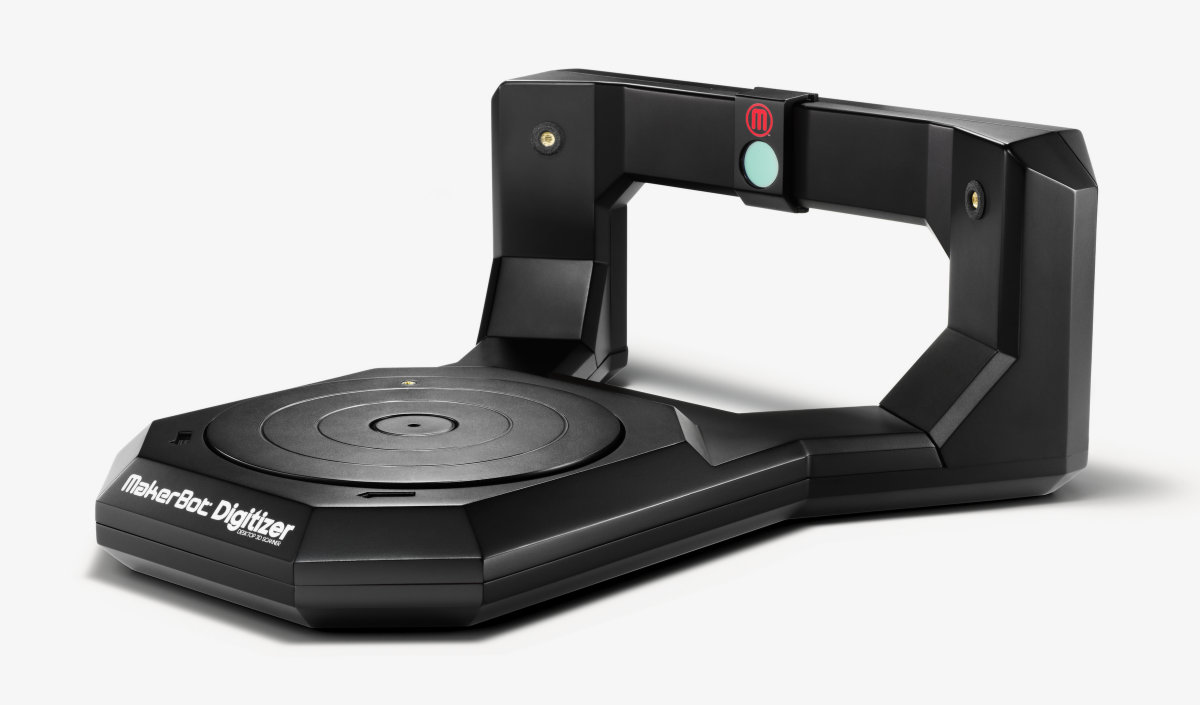MakerBot has focused its strategy around making 3D printing more consumer friendly, less technical. That’s why, for example, the company created mobile apps that allowed users to make some simple but interesting shapes that they could quickly send to their printer. Continuing that trend, Technical.ly Brooklyn has found two MakerBot patent applications for its 3D scanner, the Digitizer, which we covered when it was first released.
The first patent application appears to largely claim the way the Digitizer calibrates so that it can prepare to generate a point cloud from which is will interpolate the shape of the object.
The second application claims software that makes it easy for the user to give the system information that will help the device decide the best settings with which to make the scan, depending on the color, texture and material of the object to be scanned.
We have to interpret the meaning behind these two patents, but it seems that the claim that MakerBot is making is that the degree to which the Digitizer automates the process for the user is what’s new about the scanner.
It’s not the method itself so much as it is the fact that a consumer needs to know very little about 3D scanning in order to get a quality scan, because the device is able to make many of those decisions for the user, based on some simple inputs.
The patents have not yet been awarded. They were originally filed in September 2013, according to a spokesperson.
3D scanners work by making what’s called a point cloud, a collection of points in a digital 3D space that allows the computer to interpolate a surface, or 3D file. The Digitizer seems to use the structured light method, where laser lines are projected across an object’s surface as it rotates and a camera gathers data generated by the shape of that line.
The digitizer makes a scan of objects using two lasers and a camera, rotating the object on a disk. The device turns it into an editable 3D file, thereby making it simple for people to start from an actual object and modify it to fit their needs.
The purpose of patent law is to provide an inventor exclusive rights (for 20 years, in the U.S.) to the use and sale of an invention in exchange for publicly sharing the specifications of that invention, so that other inventors can build on it over time. Since the Digitizer is not the first 3D scanner to market, we asked MakerBot what made the Digitizer patentable.
“We can’t divulge proprietary information concerning the workings of the scanner, but we have been pretty open about its Multiscan technology and how it can take a virtual object and turn it into a digital object in about 12 minutes,” Jennifer Howard, the company’s spokeswoman, told us in an email.
The consumer 3D scanning space may be getting more competitive. We recently covered the Sprout, from HP.
Join the conversation!
Find news, events, jobs and people who share your interests on Technical.ly's open community Slack
